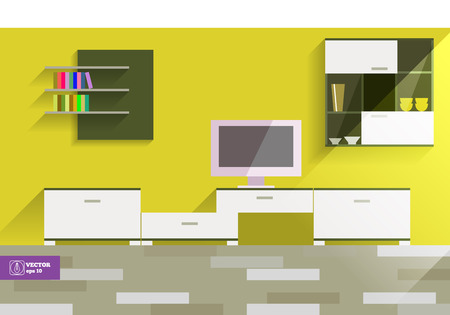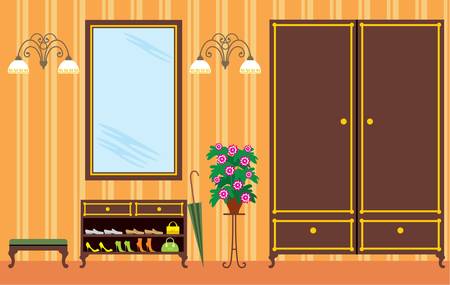Embracing Natural Light in American Homes
In the ever-evolving landscape of American home design, natural light has always played a starring role—whether in the warm embrace of a historic brownstone or the airy openness of a modern loft. The way homes capture sunlight tells a story about how Americans live, what they value, and their connection to wellbeing. In classic Victorian-era homes, tall windows and stained glass were more than decorative—they invited sunlight to animate patterned wallpapers and dark wood interiors, reflecting both style and necessity in an era before electric lighting was widespread. Fast forward to today, and modern architecture celebrates sunlight through open floor plans, expansive glass walls, and skylights that blur boundaries between indoors and out. For many Americans, this isn’t just about aesthetics; it’s about creating uplifting spaces that support mood, productivity, and physical health. Whether restoring a Craftsman bungalow or designing a sleek new build, homeowners now prioritize natural illumination for its energy-saving perks and its ability to foster a sense of comfort and vitality. This blend of heritage appreciation and contemporary innovation highlights how cultural preferences around light have evolved—yet remain central to the American lifestyle.
2. Timeless Techniques in Historic Homes
Historic American homes are a testament to ingenuity when it comes to harnessing natural light. Well before the era of floor-to-ceiling windows and smart glass, early architects and builders implemented clever solutions that still inspire homeowners today. Let’s dive into some classic strategies—like leaded glass, transoms, and vintage skylights—that have endured for generations.
Leaded Glass: Artistry Meets Function
Leaded glass windows were more than just decorative flourishes in historic homes; their unique patterns could diffuse sunlight throughout a room, softening harsh glare while casting beautiful prismatic effects on interior walls. These iconic windows also provided privacy without sacrificing brightness—a perfect blend of form and function that’s as relevant now as it was then.
Transoms: Elevating Light Flow
Transom windows—those charming panels above doors or between rooms—were a staple in early American architecture. By allowing daylight to travel deeper into hallways and adjacent spaces, they kept interiors brighter and airier. Their placement high above eye level made them ideal for both privacy and illumination, especially in row houses or urban brownstones with limited exterior walls.
Vintage Skylights: Bringing the Sky Indoors
Long before modern sun tunnels, vintage skylights were used to funnel daylight from the roof straight into attics, stairwells, or kitchens. These fixtures—often framed in ornate wood or metalwork—became signature elements in Victorian and Craftsman homes. Even modestly sized skylights made a big impact on otherwise dim interiors.
Historic Home Daylighting Solutions at a Glance
| Technique | Main Benefit | Typical Application |
|---|---|---|
| Leaded Glass Windows | Diffused light & privacy | Living rooms, entryways |
| Transoms | Light flow between rooms | Above doors, hallways |
| Vintage Skylights | Direct sunlight infusion | Kitchens, stairwells, attics |
The Enduring Appeal of Classic Techniques
If you’re restoring an older home or simply want to channel some old-school charm in your space, these time-honored methods offer both beauty and practicality. With their proven ability to maximize daylight while adding unmistakable character, it’s no wonder these features are making a comeback—even among fans of contemporary design.

3. Bright Ideas for Modern Dwellings
Modern American homes are all about making a bold statement with light, blending comfort and design flair. Homeowners today are moving beyond the basics, embracing innovative solutions to flood their spaces with natural sunshine. The floor-to-ceiling window is a favorite—sleek, dramatic, and perfect for those panoramic backyard or city views. These expansive glass panels not only erase the barrier between indoors and out but also create a sense of openness that’s signature to contemporary living.
Embracing New Materials & Technologies
Today’s modern dwellings aren’t shy about using advanced materials. Smart glass technologies, for example, allow residents to control the transparency or tint of their windows at the tap of a button or even automatically, balancing privacy and daylight with ease. Low-E (low emissivity) coatings and triple glazing have also become staples in energy-conscious American households, keeping interiors bright while reducing heat gain—an especially cool trick for sunny states like California or Arizona.
Open Concept, Open Light
The open-concept trend continues to sweep across America, tearing down walls to let light travel freely from room to room. Skylights and solar tubes add another dimension to this approach: these features channel sunlight deep into central areas of the home that might otherwise feel dark or boxed in. Whether it’s a minimalist loft in Brooklyn or a high-tech ranch in Austin, the goal is always to maximize every ray of sun Mother Nature offers.
Personalized Lighting Controls
Modern homeowners love having options at their fingertips. Smart home systems now integrate lighting controls that adjust window shades and artificial lights based on the time of day or weather conditions outside. With voice assistants and smartphone apps, setting the perfect ambiance is as easy as saying “Hey Alexa, let there be light.” It’s all about convenience blended with style—a true reflection of 21st-century American living.
4. Comparing Challenges: Old vs. New
When it comes to harnessing natural light, both historic and modern homes come with their own set of hurdles. Whether you’re restoring a 1920s Craftsman or designing a sleek contemporary retreat, understanding the unique considerations of each era is key for a successful lighting solution.
Original Architecture vs. Cutting-Edge Materials
Historic Homes: These gems often feature thick walls, small windows, and intricate trim. While these details lend character, they can also limit natural light and complicate window upgrades. Preserving original features often means working around antique glass or odd-sized frames, which may not be up to current building codes or energy efficiency standards.
Modern Homes: Built with energy codes in mind, these spaces frequently boast expansive windows and open floor plans. However, innovations like floor-to-ceiling glass panels or high-tech materials can create their own complications—think UV protection, glare control, and maintaining thermal performance.
Key Considerations Table
| Feature | Historic Homes | Modern Homes |
|---|---|---|
| Building Codes | May require variances for window replacements; must preserve architectural integrity | Must meet strict energy efficiency and safety codes; easier compliance but more documentation |
| Insulation | Often lacking; retrofitting can be tricky without damaging historic details | Typically high-performance; built-in solutions reduce energy loss from the start |
| Window Orientation | Fixed by original design; may not maximize sunlight or views | Can be optimized during planning for ideal daylight and privacy balance |
| Material Compatibility | Older wood or steel frames may need custom solutions for upgrades | Engineered materials allow for larger panes and integrated smart tech |
| Aesthetic Impact | Sensitive restoration required to maintain period charm while improving function | Bolder changes possible; flexibility in choosing minimalist or statement designs |
Tackling the Obstacles: A Local Perspective
No matter where you live—from Boston’s brownstones to LA’s mid-century marvels—local code requirements and climate conditions add another layer of complexity. That’s why partnering with an experienced contractor who knows both preservation rules and modern innovations is essential. The right team will help you brighten your space without compromising on style or compliance.
5. Blending the Best: Transitional Lighting Solutions
For homeowners who appreciate both the soul of historic architecture and the convenience of modern innovation, transitional lighting solutions offer a golden opportunity to enjoy the best of both worlds. Imagine retrofitting a classic Craftsman bungalow or a Victorian gem with cutting-edge daylighting while preserving its timeless curb appeal—no compromise needed.
Retrofitting Without Regret
One clever approach is to install energy-efficient skylights or solar tubes in less visible areas, such as hallways or closets. These upgrades bring natural light deep into the heart of your home without altering beloved street-facing facades. Modern low-profile skylights can be customized to blend seamlessly with period roofing materials, ensuring that exterior aesthetics stay true to their roots.
Historic Windows, Modern Performance
If you’re lucky enough to have original stained glass or divided-lite windows, consider interior storm panels with UV filtering. This solution boosts insulation and daylighting efficiency without changing the window’s classic look—a win for sustainability and style.
Melding Materials and Technology
Transitional homes benefit from blending old-world materials like wood trim or vintage hardware with new technologies. For example, automated smart shades can be installed inside existing window frames, maintaining visual integrity while giving you fingertip control over natural light levels throughout the day.
Ultimately, it’s about respecting history while embracing progress. With thoughtful design choices and a little creativity, homeowners can craft spaces that shine—literally and figuratively—honoring architectural heritage while enjoying all the perks of modern living.
6. Regional Highlights: Coast-to-Coast Inspirations
America’s vast landscape offers a tapestry of architectural styles, each responding to its own unique climate and culture—and nowhere is this more evident than in the ways homeowners maximize natural light. On the sun-kissed West Coast, California bungalows and mid-century ranches embrace wide windows, clerestory glass, and even retractable walls to dissolve boundaries between indoors and out. Here, light is abundant, so the focus is on filtering glare with overhangs, sheer drapes, or frosted glass, creating that laid-back, “bring the sunshine in” vibe.
Moving inland, the Southwest draws from adobe traditions with deep-set windows and thick walls—cool in summer, warm in winter. Homeowners often use skylights and strategically placed courtyards to funnel daylight into historic haciendas or modern desert dwellings without overheating interiors.
The Midwest’s farmhouse roots inspire tall double-hung windows and cozy window seats. Here, maximizing sunlight during short winter days is key. Modern homes might feature sun tunnels or expansive bay windows that capture every possible ray, while classic Victorians rely on transoms and stained-glass accents for both function and flair.
On the East Coast, New England colonials remain iconic—with symmetrical facades and multi-pane sashes designed for both beauty and insulation against chilly winters. Today’s renovations often add larger dormers, open-plan layouts, or solariums to flood these storied spaces with gentle morning light while maintaining their historic character.
No matter where you call home—from Pacific breezes to Atlantic crispness—the American approach to natural lighting is all about blending local tradition with innovative solutions. Whether it’s a period restoration or a sleek new build, the goal remains timeless: making every room glow with warmth, comfort, and unmistakable style.


